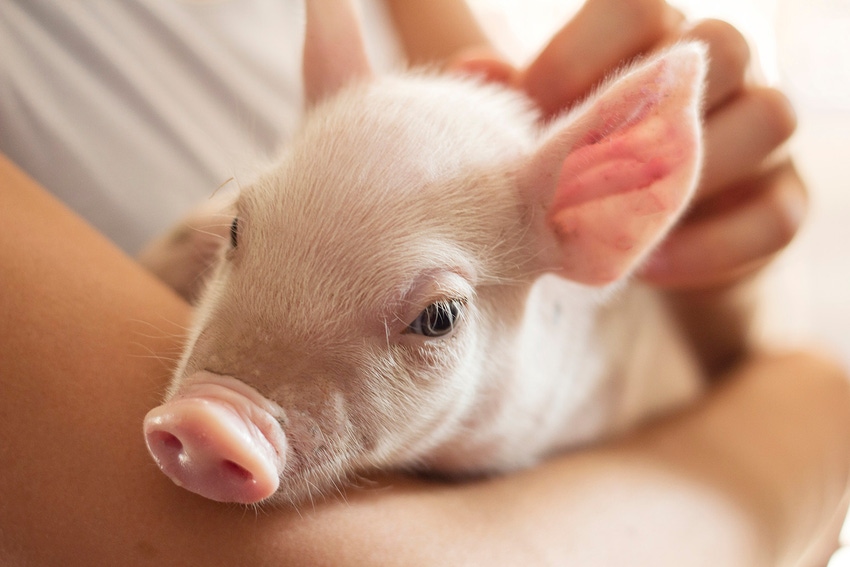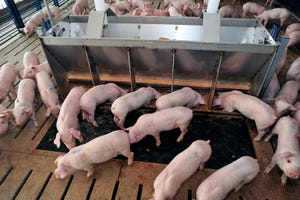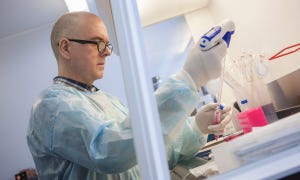PRRS protection can’t be predicted by lineage, sequence
During the Carthage Veterinary Service Swine Conference, the veterinarian shared how much the virus has evolved and why it is difficult to find a vaccine that offers homologous protection.

After years of research work to further characterize and classify porcine reproductive and respiratory syndrome virus isolates, dendrogram depictions of PRRS virus lineages are starting to resemble a tree with branches upon branches, says Erin Lowe.
“All of our contemporary PRRS viruses out there, they’re all heterologous to what we’re seeing in the bottles, and that’s standard,” Lowe says. “This virus is going to continue to evolve. The branches on those trees are going to continue to go farther and farther away, and it’s only going to get further out.”
During the 29th annual Carthage Veterinary Service Swine Conference, the veterinarian from the Integrated Health Management team within the Swine Division at Boehringer Ingelheim Animal Health shared how much the PRRS virus has evolved and why it is difficult to find a vaccine today that offers homologous protection.
Whenever a new PRRS virus strain appears, it is sequenced to try to compare it to other viruses and to see the percentage difference between the two strains. Usually, Lowe says, the rule of thumb when looking at percent difference, is roughly 2% to 3%. “It’s not science. It’s just kind of what we’ve seen that works over time, so if it’s 2% to 3% similar, we call it homologous,” Lowe says. “But if it’s more than that, if it’s very different, then we call it heterologous.”
In some research settings, sequences are also are placed in the lineage, a system that was developed to help researchers understand “what bucket” each virus goes in.
“It helps us understand the evolution of viruses over time. It helps us understand how viruses are moving within China versus the same virus ancestor moving in the United States,” Lowe says. “These tools are great epidemiological tools, so this is a way that we can go out and we can understand is the virus evolving on my farm? Is it evolving within an area or within my production system? And is it evolving in our country?”
However, Lowe says both sequencing and the lineage system are not adequate enough to predict virulence or protection in regard to vaccine selection. All vaccines in the field are heterologous to contemporary wild-type PRRS field isolates. Lowe says none of the current commercial modified-live virus vaccines is close enough to the 2% to 3% threshold to be considered homologous to the recently isolated wild-type PRRSV and therefore, they would be considered as heterologous to these wild-type PRRSV strains.
To put it in perspective, one of Lowe’s team members took 10 current wild-type Lineage 1 PRRSV isolates from 2017 through very early 2019 and compared them to all of the commercially available modified-live virus vaccines. “When we did that, all those viruses were at least 10% different than every one of the vaccines, so even though these were all Lineage 1, and the new Prevacent vaccine is a Lineage 1 vaccine, the lineage didn’t matter relative to the percent homology,” Lowe says. “It’s still heterologous, so the viruses that are out in the field today are all heterologous to the viruses that are in the bottles today.”
Lowe says having the epidemiological information is important, but we still struggle today to try to predict protection. We have yet to figure out what is the determinant of protection for PRRSV. If we knew, we might have a test for that, and we could more likely create a vaccine that works extremely well in every situation. Instead she says the next best thing the industry does have is the challenge study. A challenge study takes pigs, vaccinates some of them, doesn’t vaccinate others and then infects all the pigs with the same virus strain.
“It’s great science. It’s not very practical out on your farm, but it’s the best that we have in order to assess the current isolates that are out there roaming around,” Lowe says.
So far Boehringer Ingelheim has conducted more than 21 challenge studies and has also demonstrated success in the field cross-protecting against varying field viruses. Through these studies, the team has been able to reduce the amount of resident wild-type virus on farms and improve average daily gain and reduce mortality rates with Ingelvac PRRS MLV.
“There are epidemiological tools out there that are fantastic and will help you understand the spread on your farm, the spread within your system and the spread within our nation. The challenge with that is that you can’t use them to understand protection or predict protection,” Lowe says. “We have demonstrated heterologous protection over many challenge studies and field-based studies over the years, and we can offer an expected level of protection based on that information.”
About the Author(s)
You May Also Like





